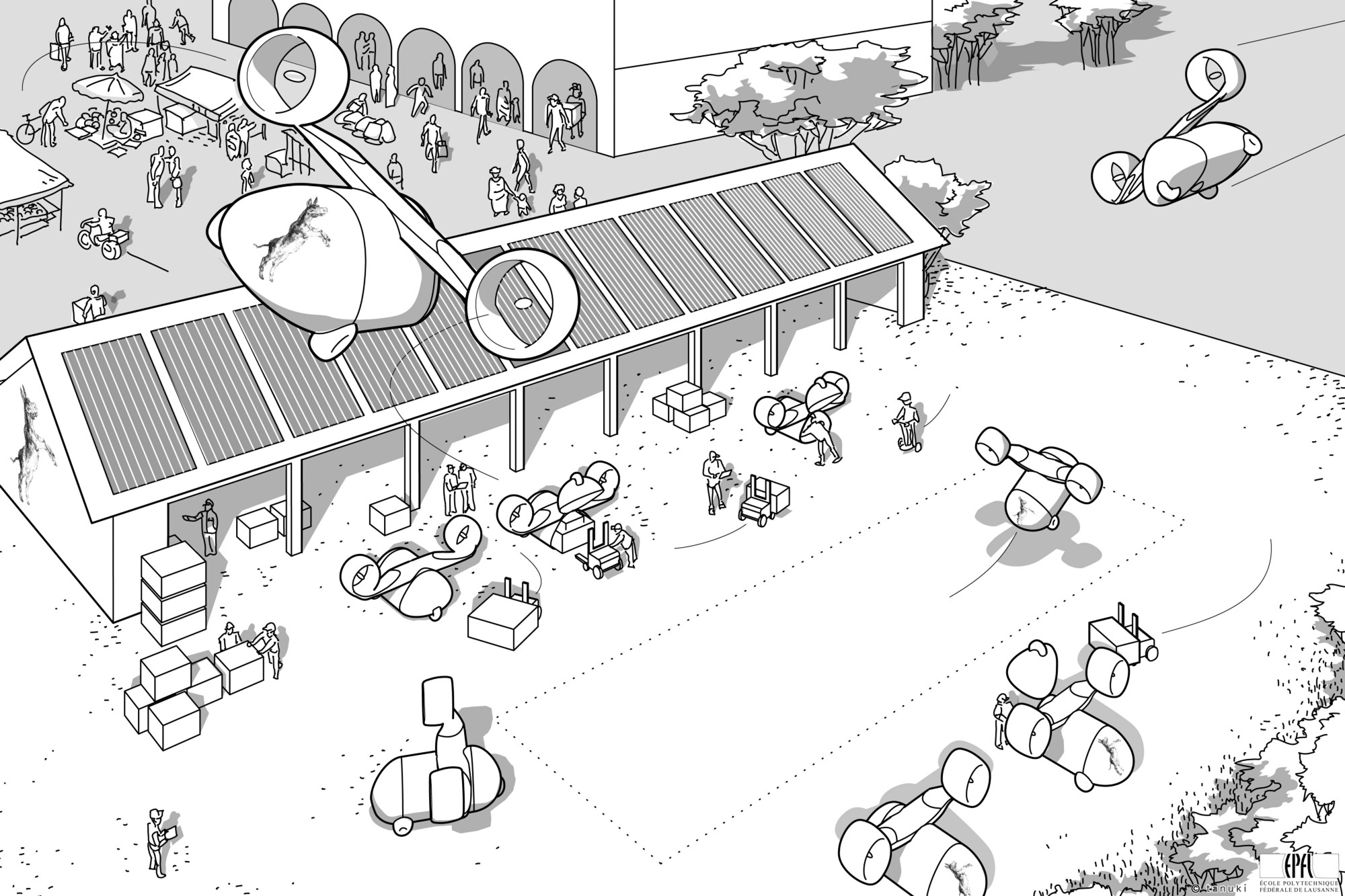Imaginary suburban futures

Friday morning when we left the cab that had brought us and our newborn from the hospital the mail carriers on their bicycles where swarming out around us (we live 3 houses down from a postnl distribution location where the mail for the neighborhood is transferred from delivery vans to bikes). Having spend some of the waiting time in hospital reading Alex Madrigal’s Atlantic feature on Google’s delivery drone programme this made me briefly contemplate if our daughter would grow up to see a world filled with mail carriers or one filled with flying delivery drones.
In spite of the hype caused by said article which seems to have made otherwise reasonable people abandon their analytic rigor, i am pretty certain that delivery drones will not play a significant role in my or my daughters life anytime soon1.
Primarily because i can’t really see the economics making sense (certainly not for the silly examples of flying spare batteries or electric drills around) but more importantly because these things have clearly sprung from a suburban mindset that assumes that people have exclusive control over the vertical space belonging to a swath of land. For the majority of people in cities this is simply not the case and as a result they don’t have a place where the delivery drones could land (or lower their eggs).
The answer for the desire to have relatively quick access to things is living in a city. Cities provide quick access to shops and via mail carriers on bikes. If any part of the delivery process will be replaces by autonomous vehicles i would bet on the trucks serving the trunk routes and maybe the those serving neighborhood distribution centers. Autonomous flying delivery drones, may sound like the future, but they almost certainly aren’t, unless we envisage the future to be a version of suburbia that has been perfected so that there is no need to venture out into the world and interact with anyone anymore.
I would certainly hope that the future will look a whole lot more urban.
-
At least where it comes to the developed world. Madrigal also points to a number of ideas about unmanned arial vehicles as parts of a future distribution infrastructure in Africa, which sound somewhat more plausible. ↩︎ ↩︎
